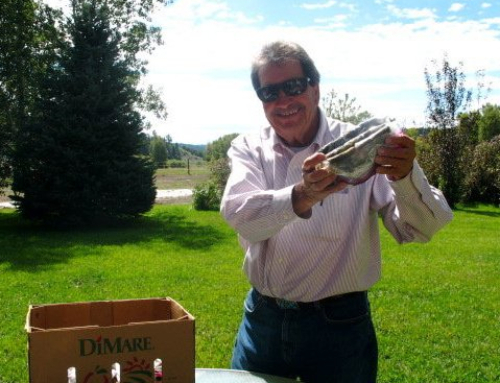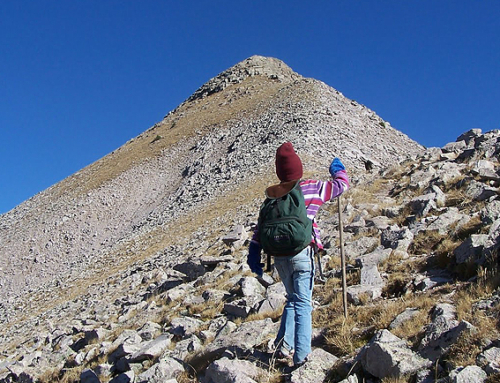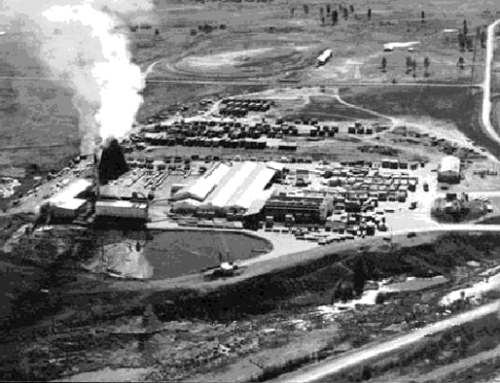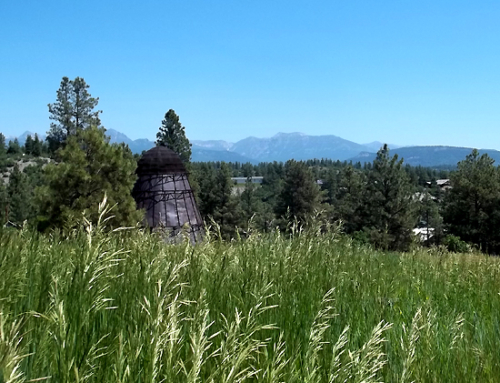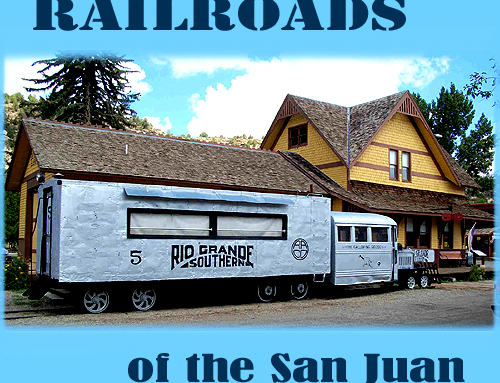We obtained permission from Newmont Mining Company to post this well written and interesting article on the historic mining days northwest of Pagosa Springs in the Ouray / Telluride area. At this same time the Summitville Mine, northeast of Pagosa, was also in production. See its history in our History Section.
Part II of this story will be posted next week.
Norm
A Brief History of the Idarado Mine
By Samantha Tisdel Wright
The history of the Idarado Mine is as long as the tunnels and as rich as the ore veins that riddle its guts. Its stories are stoked by volcanic tantrums, and sculpted by the winds of history that blew Americans across the West.How far back do you want to go — World War II? Manifest Destiny of the 1800s? Dominguez and Escalante in 1776? The Tertiary period 35 million years ago, with its great belching supervolcanoes and collapsed calderas that spawned the fabled ore bodies of the San Juan Mountains. All had a role to play in the rise of the largest mining operation that ever existed in the San Juans.
The Big Bonanza
As far as Rudy Davison is concerned, the Idarado Mining Company’s origins near Telluride start in Marshall Basin, where two lucky prospectors named Fallon and Wightman struck San Miguel County’s first bonanza back in 1875.
Davison is the erstwhile publisher of the Telluride Times and author of the guidebook, Rudy’s View, which contains a comprehensive history of the Idarado Mine.
“It all started there,” he says, pointing to a huge landscape painting that hangs above his living room couch in his spacious, southwestern-style home near Durango. The painting clearly depicts an oxidized yellow-orange rocky outcrop stitching its way through the pale green tundra of Marshall Basin.
Davison imagines Fallon and Wightman hiking from Silverton to Ouray, up and over the ragged spine of Virginius Pass and down into the basin.
“And they were like, ‘That’s it!’” he reckons. “That” being the infamous Smuggler vein that soon became synonymous with the word “bonanza” and triggered a gold rush to the high country above present-day Telluride.
Manifest Destiny was in full swing. The newly penned Mining Act of 1872 had just spelled out the rules for prospecting and mining on federal public lands. The Brunot Agreement of 1873 had then conveniently pried open the San Juan Mountains for mining by removing 3.7 million acres from the Ute Reservation in western Colorado.

A rail bicycle invented to travel the miles of underground tunnels. Amazing!
The mountains that Fallon and Wightman surveyed on that fateful day would soon be filled with fabulously wealthy mines like the Tomboy and Smuggler-Union that eventually became part of the Idarado – with gold ore so rich in some places that the Italian miners would call it “polenta”, and plentiful base metals down below.
The Sneffels Sag
In 1896, as Thomas Walsh was discovering the storied Camp Bird Mine in the Sneffels Mining District above Ouray and the mines around Telluride were booming, a mine developer named William J. Hammond, Jr. of Pittsburg, Pa. headed up into the Red Mountain area to start a mining venture of his own: the Treasury Tunnel Mining and Reduction Company.
A previous mining boom-gone-bust in the Red Mountain Mining District had plundered rich vertical silver chimneys inside the acidic ring faults of the Silverton Caldera, leaving an oozing mess of abandoned mines in its wake.
On a hunch, Hammond now probed the high gray mountains that rose up just beyond the caldera to the west. He hoped to intercept a rich belt of parallel veins in a formation called the “Sneffels Sag” that nearby mines like the Revenue-Virginius, the Tomboy, the Liberty Bell and the Smuggler-Union chased from different directions.
Hammond never struck it rich, but he did drive his Treasury Tunnel some 2,000 feet into the mountainside, and found enough ore to turn a small profit before returning to Pittsburgh 10 years later.
The project sat mostly dormant for years, as glittering ore veins and crystal caves remained buried in the dark gray country rock beyond the tunnel’s reach. It would take an industrial scale mining enterprise with deep pockets, a broad vision and a long game plan to finally unlock this hidden treasure trove.
War and Peace
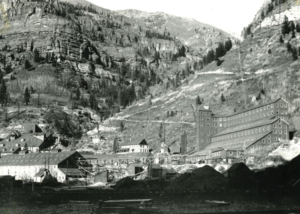 In 1939, as the Nazis invaded Czechoslovakia and swept across Europe to occupy France, Newmont Mining Corporation trekked into the San Juan Mountains, looking for potential sources of base metals with an eye toward supporting the Allied war effort in Europe.
In 1939, as the Nazis invaded Czechoslovakia and swept across Europe to occupy France, Newmont Mining Corporation trekked into the San Juan Mountains, looking for potential sources of base metals with an eye toward supporting the Allied war effort in Europe.
An eccentric and brilliant exploration-geologist-turned-Newmont-executive named Fred Searls Jr. led the charge. He showed up at the Treasury Tunnel in his old cloth cap, yellow mining boots and signature red “jazzbow” necktie, with a plan to extend the Treasury Tunnel thousands of feet deeper into the mountain to service a block of historic mining properties up above.
His first target was the Black Bear Mine, an old gold and silver producer straddling the divide between Ouray and San Miguel counties that had large reserves of zinc as it descended from Ingram Basin down through the mountain.
Searls began buying up or leasing key claims throughout the district and convinced Sunshine Mining Company of Wallace, Idaho to go halfsies with Newmont in a joint venture to develop the project. With a nod to the shared Idaho and Colorado ownership interests of the venture, they called it the Idarado Mining Company. The project was off and running, but was soon sidelined when the first ore body they encountered inside the tunnel assayed poorly.
Everything changed in 1941, when the Japanese bombed Pearl Harbor, catapulting the United States into the global conflict. The nation suddenly, urgently needed zinc, lead and copper to make warships, warplanes and bullets.
The U.S. Government’s Gold Closing Order of 1942 forced all gold mines across the country to shut down, shifting the mining labor force toward producing war-related metals. Meanwhile, the War Production Board had created an agency called the Domestic Metals Procurement Program (later known as the Metals Reserve Company) to help finance the production of these strategic metals.
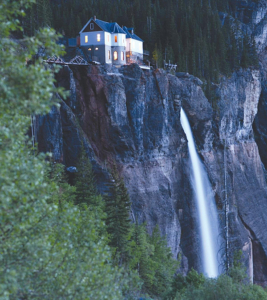 The Idarado’s Treasury Tunnel project was a prime target for this program.
The Idarado’s Treasury Tunnel project was a prime target for this program.
The Metals Reserve Company leased the Idarado’s group of mines in June 1943, and the U.S. government footed the bill to drive the Treasury Tunnel 7,000 feet deeper into the mountain. The legendary Colorado tunnel driver “Long John” Austin and his crew were hired for the job, and hit the Black Bear vein in no time flat. It was as rich in ore as Searls had hoped for.
But a lot of development work still remained before the Idarado Mine could begin producing — from driving the 600-foot Treasury Raise or “T-Raise” to intersect and drain the old Black Bear workings, to driving drifts along the vein, to building ore chutes to fill the haulage trains and blocking out stopes (a steplike part of a mine where minerals are being extracted) for eventual ore extraction.
By the time all this was done, the dust of D-Day was settling in Normandy, and an Allied victory shone on the horizon. No Idarado ores went to World War II, but the Korean War soon came along, and Idarado production was in full swing by then.
In June 1944, Newmont and Sunshine bought back their lease from the Metals Reserve Company, reimbursed the government for the money it had spent on the tunnel extension, and began to develop the property in earnest.

